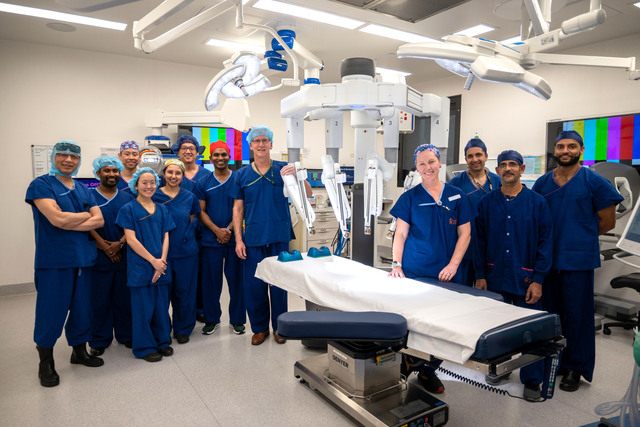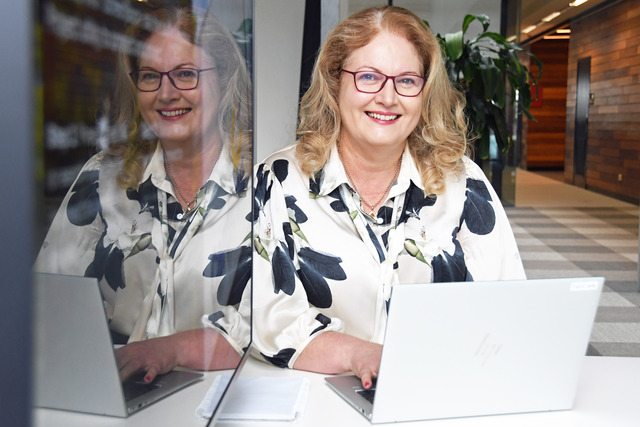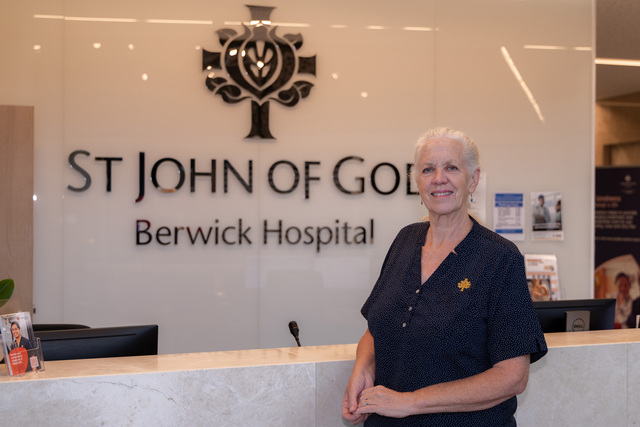Casey Hospital has unveiled Monash Health’s first surgical robot, a $4.2 million system funded by a local family’s donation.
The family, who wished to remain anonymous, made the contribution through the Monash Health Foundation in 2024, enabling the hospital to purchase a state-of-the-art dual-console robotic system.
The robotic system is used for patients undergoing urology surgeries, with plans to introduce its use into gynaecological, colorectal and other surgeries in the future.
Dr Scott Donnellan, director of Urology at Monash Health, said they had been trying to obtain the robotic device at Casey Hospital for a number of years.
“We had to prove that it was actually better than the open surgery technique. We did a lot of research. We were able to look at the data from about a million cases around the world, which showed improvements for the robot over the traditional open surgery,” he said.
“Then we had to actually be able to afford to buy the instrument. Unfortunately, they are costly, and that’s where the wonderful family of donors came through the Monash Foundation, and they offered to purchase a robot device for Monash Health.
“They did not want to be named because they believed that the device was never about them, but it was actually about the patients.”
For prostate surgeries, the robotic system is proving to be a game-changer.
Dr Donnellan explained that the traditional operation involves a large incision from below the belly button to the pubic bone, performed with scalpels and scissors.
By contrast, the robotic system uses advanced keyhole surgery so that the incisions are much smaller.
“The impact of the patient in terms of recovery is much better,” Dr Donnellan said.
According to him, patients are experiencing less blood loss, less postoperative pain, and faster recovery.
“More importantly than that, our data and the world information suggest that the cancer results in terms of surgical clearance and surgical margins have improved,” Dr Donnellan said.
“The erectile functions improved. The confidence rates improved. So overall, it’s significantly less invasive, and it gives excellent results.”
Although it is often described as “robotic surgery,” Dr Scott Donnellan was quick to point out that the technology does not replace the surgeon.
Instead, it enhances their precision.
“It’s robot-assisted surgery, so it does depend completely on the surgeon…,” he explained.
Sitting at a console inside the operating theatre, the surgeon uses hand controls to steer up to four instruments.
“We actually have numerous instruments, and we can guide each of the four instruments by clutching, like driving a car,” Dr Donnellan said.
“The ideal thing with the robot is that the vision is in three dimensions, so it’s significantly better than a standard laparoscopy. The steadiness of the instruments is outstanding because it takes away all the tremor of the surgeon.
“And the third thing is that the instruments have what we call a wrist. So, at the very near the end, where, for example, a pair of scissors is, there’s a little wrist.
“You can manipulate the instruments into much finer spaces rather than traditional laparoscopy, where the instruments are just straight all the way down. So, it provides extraordinary vision and dexterity for the surgeon.”
The dual-console design also allows two surgeons to operate together, making it safer and faster to train the next generation of specialists.
“What we have found is that the safety of teaching surgeons to perform these operations using a robot is much better and much safer,” Dr Donnellan said.
“The learning curve for the training surgeon has become much steeper because they can do parts of the operation in an intermittent manner with the principal surgeon, literally taking turns doing certain aspects.”
Plans are now underway to expand the program into gynaecological and general surgery, with hopes to introduce similar technology at Monash Health’s Clayton and Dandenong hospitals in the future.
Dr Donnellan said Casey Hospital is leading the way in Monash Health and around Victoria, and it’s growing in one of the largest population growth sectors in the State.
“The excitement and the engagement from the hospital staff are also palpable,” he said.
“It’s really raised the level of the status of the hospital as well.”







